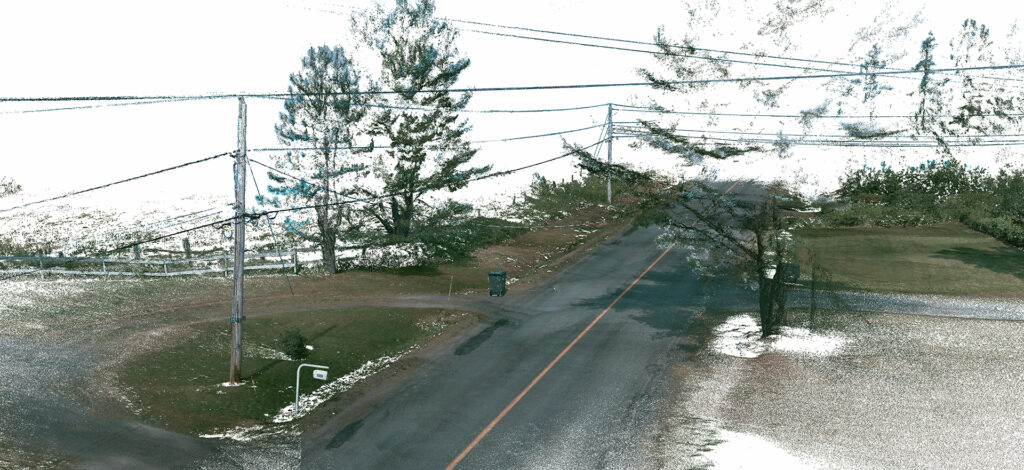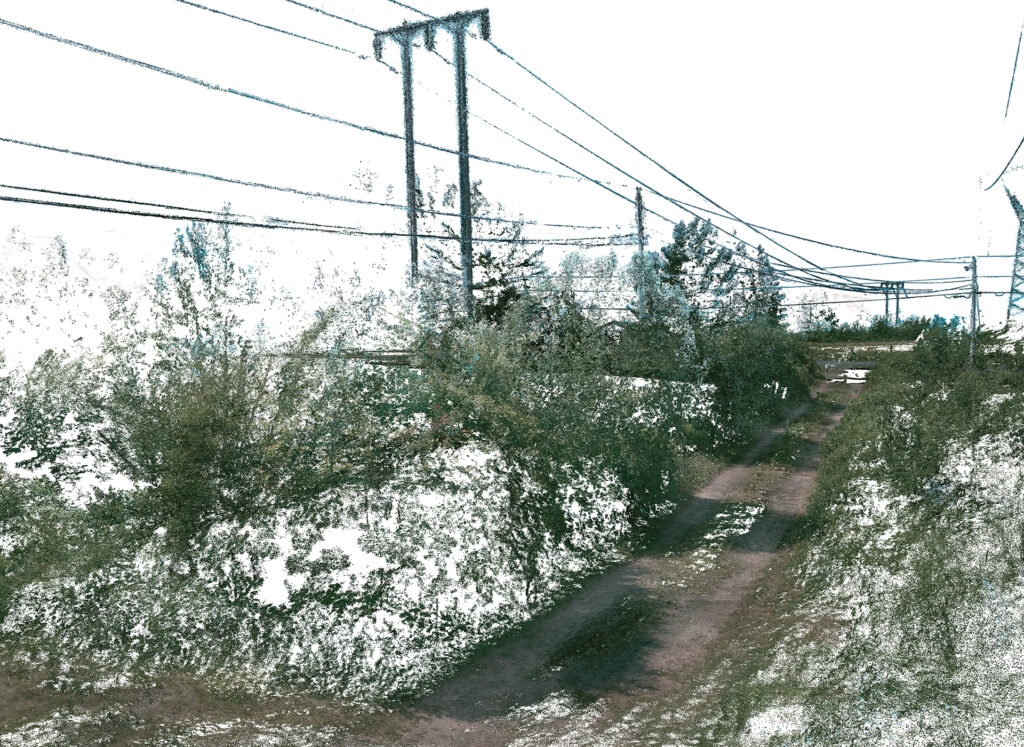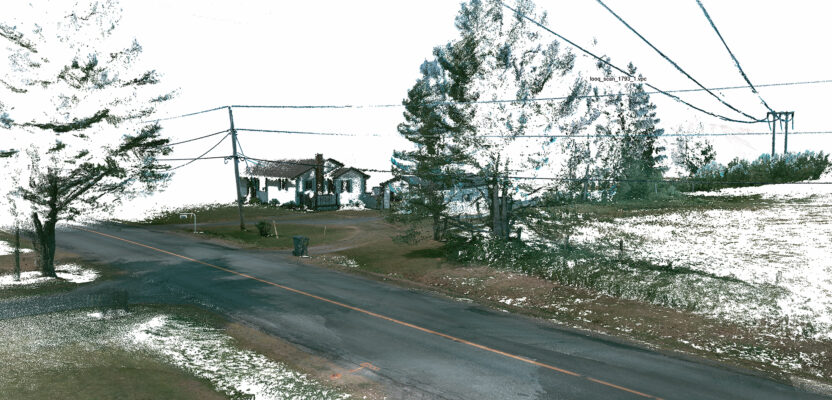Addressing its critical role in the nation’s power grid and how integrating AI and digital twins will help
By Christine Byrne
Managing vegetation around America’s electric transmission and distribution infrastructure is crucial for ensuring uninterrupted power delivery. Utility Vegetation Management (UVM) is highly complex and represents a significant cost burden on utility operations and maintenance (O&M) budgets. This includes essential tasks such as tree trimming near power lines, which are critical for service reliability, grid resiliency, and operational safety.
Research from Texas A&M University highlights that vegetation management is one of the largest O&M expenses for utilities, demanding substantial resources and posing logistical and safety challenges.
Each vegetation encroachment area requires specialized crews and equipment capable of working near live power lines, often involving planned de-energization, arborists, and traffic control. Electric utilities rely on external contractors who must adhere to local and regulatory standards, mitigate outage risks, and maintain service continuity to meet SAIDI (System Average Interruption Duration Index) and SAIFI (System Average Interruption Frequency Index) goals.
SAIDI measures the total minutes of electric interruptions experienced by the average customer per year, while SAIFI tracks the frequency of these interruptions. Traditionally, UVM follows fixed maintenance schedules—typically ranging from two to five years—and involves high budgets, often leading to inefficiencies and increased costs.

Integrated systems designed to reduce outages caused by trees, lower trimming costs can minimize liability and operational risks. Courtesy; Looq AI
The Scale of the Challenge
Utilities manage thousands of tree trimmings each year, significantly straining their resources. Handling hundreds of trimmings weekly poses operational challenges that test efficiency. Reactive UVM, which addresses issues only after service disruptions, proves more costly than proactive strategies. Preventative measures not only reduce outage repair costs but also lower legal liabilities from incidents like prolonged outages or wildfires.
Reactive vs. Proactive UVM
Traditional vegetation management often reacts to issues as they arise, rather than proactively mitigating risks. However, utilities are increasingly adopting proactive strategies using AI and digital twins.
AI analyzes data from satellites, drones, and ground sensors to predict vegetation growth and identify potential threats before they escalate. This predictive capability optimizes resource allocation, potentially reducing outages by up to 15 percent through efficient scheduling.
While UVM incurs high operational costs, proactive maintenance is more cost-effective than post-outage repairs or wildfire-related liabilities. A survey by Des Moine, Iowa-based CNUC, a vegetation management company, found that nearly a quarter of U.S. energy outages are vegetation related.
To address these challenges, utilities are investing heavily in advanced technological solutions. This strategic shift is evident in the approximately $8 billion spent annually on UVM in the U.S., driven by the growing demands of transmission and distribution infrastructure. This funding underscores the importance of cutting-edge technology in enhancing vegetation management.
Data Capture Challenges
Current data sources vary in their ability to identify vegetation risks. Traditional methods like satellite imagery often lack the resolution to pinpoint specific threats, such as individual branch encroachments. To overcome these challenges, utilities are increasingly integrating ground-based reality capture technology. By combining AI-driven analytics with digital twins, utilities gain real-time insights into vegetation growth, optimizing maintenance planning and enabling continuous monitoring.
Enhancing Vegetation Management with Advanced Technology
To effectively manage the safety and reliability of power line corridors, engineering teams leverage advanced tools that integrate artificial intelligence, digital twins, and diverse data sources such as the Looq Platform, which exemplifies this approach. It starts with the proprietary handheld qCam, which combines four high-resolution cameras with survey-grade GPS and an AI processor.
This camera captures detailed data, which is then uploaded to the cloud and processed by Looq’s AI-driven software. The result is survey-grade, geo-referenced 3D digital twins, along with ortho-images and AI-generated semantic information.
Technology like this helps create an initial overview by identifying and analyzing vegetation and tree types along power lines. Modern remote sensing techniques pinpoint areas where vegetation might pose risks. This information allows the utility to take preventive actions, reducing the likelihood of power outages and improving grid reliability.
After vegetation management tasks, such as tree trimming, are completed, the technology gathers new data to evaluate the effectiveness of these actions. By comparing this updated data with the initial overview, the team can quickly identify any remaining risks and address them promptly.
Additionally, these tools continuously monitor vegetation growth, spotting potential hazards before they become serious problems. Real-time alerts and data-driven recommendations help the engineering team maintain the safety and reliability of power lines.
Benefits of this approach:
Automated Identification: AI can be used to automatically identify and classify power poles, power lines, vegetation, and trees, creating detailed maps of dangerous areas. It can generate risk-based trimming plans that outline priorities and necessary actions for trim crews.
Advanced 3D Modeling: Classified 3D models of power lines and their surrounding environment can be used for analysis and planning. The multi-camera system, survey-grade GPS, and AI processor, captures detailed field data up to 100 times faster than traditional methods.
Growth Predictions: These advanced modeling techniques can be used to predict vegetation growth, offer accurate forecasts and flexible reporting. The ability to generate custom reporting and integrate seamlessly with other applications can help shorten project timelines, proactively manage issues, reduce risks, and enhance client interactions.
Strategic Recommendations
To maximize the benefits of advanced technologies, it’s essential to compare the strengths and weaknesses of various options, such as AI, digital twins, lidar, ground control, and satellite systems. Conducting a cost-benefit analysis will highlight the return on investment of using either a single technology or a layered approach. By integrating multiple technologies, utilities can strike a balance between cost efficiency and accuracy, ensuring they get the best value for their investment.

A new platform represents a powerful solution for modernizing vegetation management and improving utility operations. Courtesy: Looq AI
Enhancing data precision and accessibility is also crucial. Additionally, ensuring that the data provided is user-friendly and easily interpretable for various stakeholders will facilitate better decision-making and ensure actionable information.
Ground-based assessments should remain a cornerstone of any UVM strategy. Emphasizing the value of ground inspections is vital for collecting detailed data that aerial and remote sensing technologies may not capture. Integrating ground control capabilities into offerings complements these technologies and provides a more comprehensive solution.
Building strong vendor partnerships is another critical aspect. Effective collaboration with utilities requires a deep understanding of their specific needs and challenges. Developing tailored solutions and proof of concepts will help address these challenges. Providing ongoing support and regular check-ins will keep utilities informed of new features and improvements, ensuring successful implementation and fostering strong relationships.
Clear communication of ROI and benefits is essential. Articulating the value and advantages of technology, focusing on cost savings, efficiency improvements, and enhanced data accuracy, will resonate with stakeholders. It’s important to communicate the positive impact of technology effectively to executives. Highlighting successful case studies and demonstrating how solutions contribute to overall operational resilience will reinforce this message.
Lastly, continuous innovation is key to staying competitive. Regularly assessing and incorporating the latest technological advancements will keep offerings innovative. Keeping abreast of emerging trends and technologies ensures that solutions remain relevant. Maintaining an open feedback loop with clients allows for understanding their evolving needs and preferences, using this insight to drive product innovation and improvements.
Vegetation management is vital for maintaining the reliability and safety of utility operations. Integrating AI, digital twins, and a comprehensive infrastructure intelligence model offers a more efficient way for utilities to manage the challenges posed by vegetation growth near power lines.
By adopting today’s available digital technologies, particularly ground-based reality capture solutions, utilities can enhance operational efficiency, reduce the risk of outages, comply with regulatory standards, and keep customers safe. As climate change continues to introduce new challenges for electric utilities, the role of advanced technology in vegetation management will become even more significant in maximizing operational efficiency.
Investing in these technologies is not just a high-tech upgrade. It is a strategic move toward a safer, resilient, and reliable power grid, allowing utilities to transition from a reactive to a more predictive vegetation management approach.
Christine Byrne is freelance writer specializing in amplifying global technology solutions with a focus on infrastructure.

